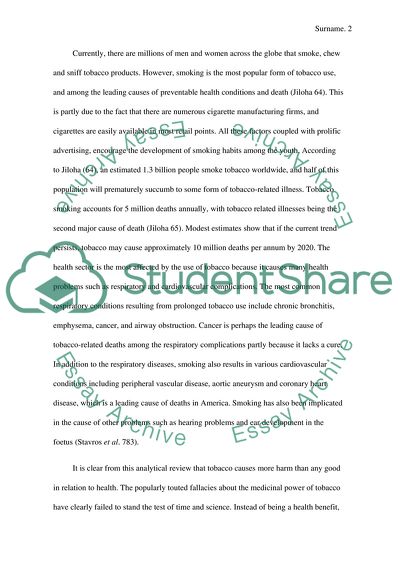Cite this document
(“Tobacco- Research Paper Example | Topics and Well Written Essays - 1500 words”, n.d.)
Retrieved de https://studentshare.org/health-sciences-medicine/1610009-tobacco
Retrieved de https://studentshare.org/health-sciences-medicine/1610009-tobacco
(Tobacco- Research Paper Example | Topics and Well Written Essays - 1500 Words)
https://studentshare.org/health-sciences-medicine/1610009-tobacco.
https://studentshare.org/health-sciences-medicine/1610009-tobacco.
“Tobacco- Research Paper Example | Topics and Well Written Essays - 1500 Words”, n.d. https://studentshare.org/health-sciences-medicine/1610009-tobacco.


